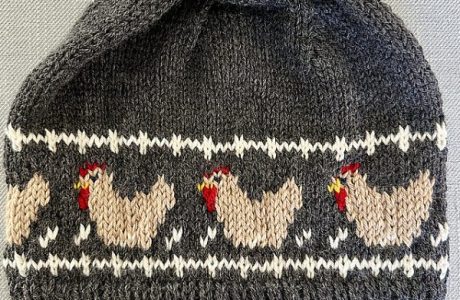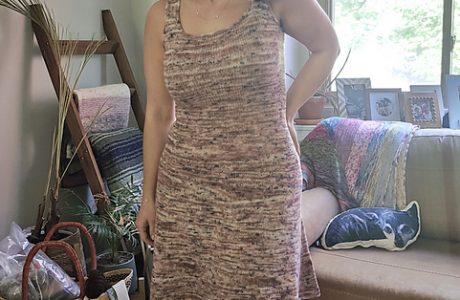 I feel like every summer as more people are traveling I see the questions about knitting on airplanes. People want to know what they are allowed to bring and if there’s any chance their precious knitting tools will get confiscated at an airport.
I feel like every summer as more people are traveling I see the questions about knitting on airplanes. People want to know what they are allowed to bring and if there’s any chance their precious knitting tools will get confiscated at an airport.
This post isn’t exhaustive but it covers the currently available information for a lot of countries you might be traveling in or to.
In the United States, the Transportation Security Administration says that knitting needles are allowed in both carry-on bags and checked luggage. It notes that “any sharp objects in checked bags should be sheathed or securely wrapped to prevent injury to baggage handlers and inspectors.”
When it comes to scissors, the blades should be shorter than 4 inches measured from the pivot point. You can also bring nail clippers to cut your yarn instead. However, circular thread cutters that include a blade are not allowed in carry-on luggage. You can pack sewing or yarn needles either in your checked bag or your carry on.
In the past when I have flown in the United States I have used circular or double-pointed knitting needles that don’t look threatening, and if possible I wrap the needles up in the project. Using interchangeable knitting needles is another good idea because if the agent questions your needles you can remove the tips (which aren’t cheap to replace, but better than losing your whole project. What is allowed is always up to the discretion of the TSA agent you’re working with, so a backup plan is a good idea.
In the UK, knitting needles are allowed on planes and in checked bags. Scissors with blades up to 6 cm (2.36 inches) are allowed in carry on baggage, and larger scissors may be allowed in checked bags, but it’s up to the airline what they allow. Sewing needles are also allowed.
If you’re flying in Canada, knitting needles of any material are allowed. Sewing kits with needles are allowed, as are scissors with blades shorter than 6 cm and nail clippers.
Australian flights allow knitting needles and crochet hooks, as well as scissors less that 6 cm long, or scissors that are pointed. Most nations of the European Union follow the same airline guidelines, which don’t specifically prohibit knitting needles and also allow scissors shorter than 6 cm. In the past, knitting needles have been prohibited on flights with AeroMexico, but that doesn’t seem to be the case anymore (via this PDF). However, scissors and nail clippers are only allowed in checked bags.
I was unable to find specific rules for knitting needles on airplanes in China or Japan, but it’s always a good idea to check with your airline if you have any questions.
The best tips for flying with knitting anywhere are to use the least threatening looking needles you can (circulars over DPNs or straight needles, smaller sized needles, even removing the tips from your circular needles and placing them elsewhere in your carry-on luggage before you go through screening. And remember that the decision as to whether you can fly with knitting needles always rests with the security agent regardless of what the stated rules are.
Have a travel knitting experience to share? We’d love to hear about it!





About 7 years ago I was departing Munich airport when their version of tsa dumped out my knitting bag. The lace project was thrown to the side and they were very interested in my pattern. I write my own charts on graph paper. There were lots of corrections and changes in different inks and handwriting. (I’m ambidextrous so either hand works). In German they were questioning the chart “it’s a code but I don’t know what” I tried to tell them in German it was a knitting pattern but I got the hand in return. Finally a supervisor came up and they were trying to figure out my code sheet. Again in my limited German I said knitting and pointed to the discarded angora shawl I was knitting. They finally allowed to to pass with my pattern!
Oh gosh! I mean, knitting IS code, but not like that!